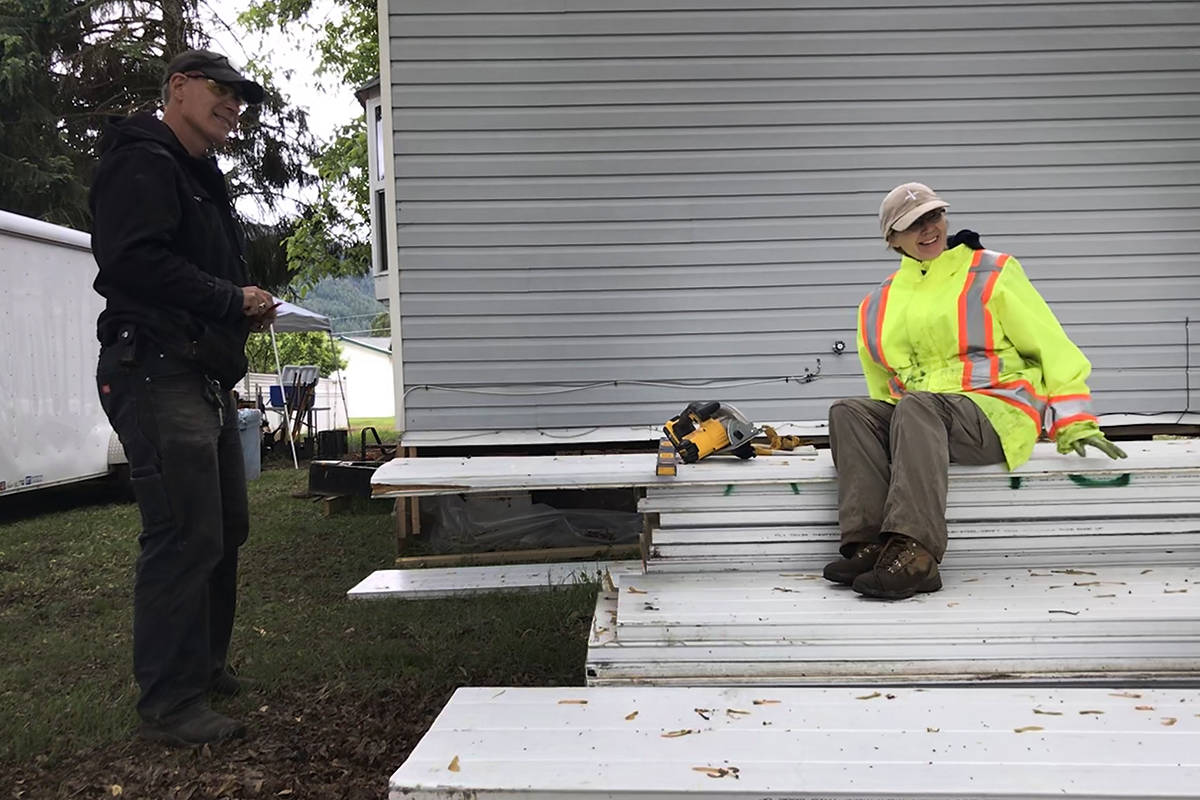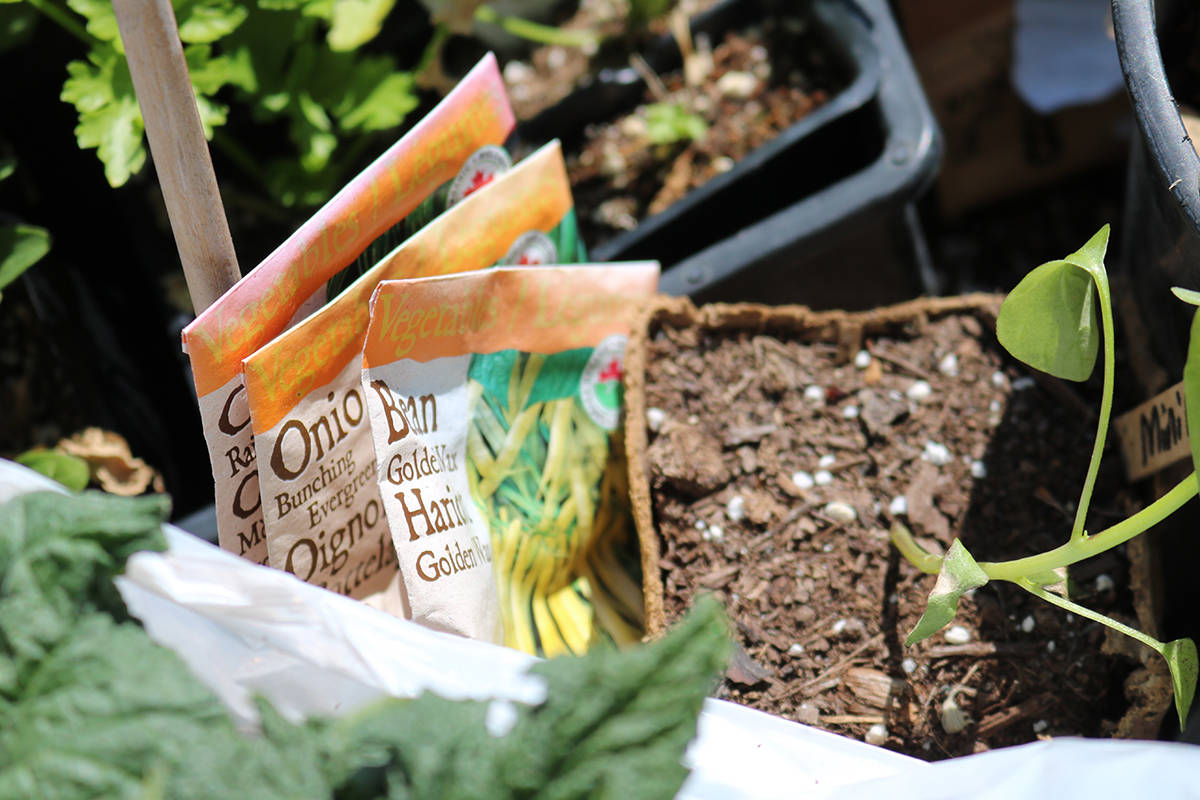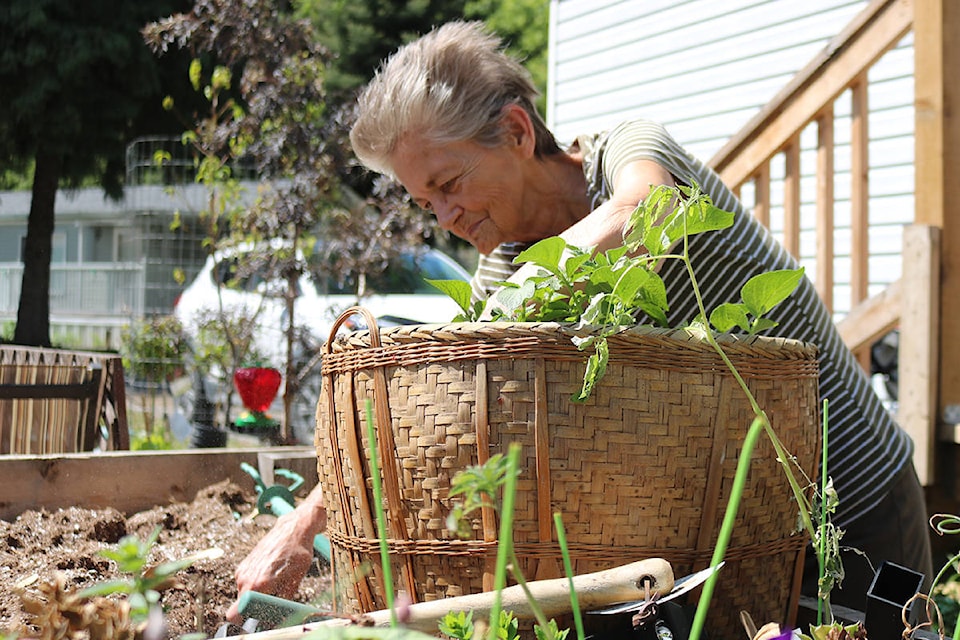By the time sandy water crept across the floor of her home on the riverbank at the River Shore Mobile Home Park, Lyn Darling had already left, hurried away by a search and rescue friend with her two cats and two dogs. She had to wade through waist-deep water to make it to the car, but at least the 71-year-old was lucky (a relative term), because she had a place to stay with her niece in town.
Darling returned to see the devastation witnessed by many residents of Grand Forks who lived on the floodplain last May. Inches of sand suffocated her garden and putrid water fouled her fridge and freezer. Though her trailer was livable, it was not at all the place she recognized. Even then, when strangers donated flats of flowers to replant, Darling says she thought that things were going to be alright.
“I thought I was recovering,” Darling said of how she felt last summer, “but it’s now over a year and I know that that’s not true.”
Though Darling used to paint and make clothing, she says she can’t remember the last time she picked up a paintbrush or had time to make jewelry or sew. Last year’s flood forced her to focus on the bare necessities for living.
In the immediate aftermath of the disaster, the goal of the flood recovery team was to ensure victims were made “safe, warm and dry” as quickly as possible, said Graham Watt, the flood recovery manager for the regional district. But, said his colleague Cavan Gates, “that’s different from happy, comfortable and permanent.”
And that’s the turn that Grand Forks is taking now too. People who were flooded out now satisfy the first goals (though that may mean living in RVs, motels or other temporary accommodations), but the region now has to look towards the second set of priorities.
In Darling’s case, “It all just became too much.”
She felt where she lived on the east side of the highway bridge was unsafe and she saw that the money it would take to fix up her property would be too much to bear. So, she picked up and moved with her mobile home and pets in tow. She’s safe now, parked at a new site with friendly neighbours to look out for her. She’s dry now, high enough above last year’s high water mark. She’s warm now too, (though the underside of her trailer was not being properly insulated during the winter). But despite her physical security, she knows there’s a lot still missing.
“I’m not the worst-off either,” Darling said. “But to me, there’s a lot of difficulty and stress that I still go through. I’ll get days when I have a panic attack. I shouldn’t be feeling this and I don’t know what causes that.”
Darling left her job as a bookkeeper in February because she felt she couldn’t deal with life and work stresses.
“When will I feel comfortable?” she asked of her new situation, “I guess when I have my garden.
“To me, that’s home. When you put your garden in, and you feed and water your plants and start pulling fruits and vegetables off of it, then you have a home.”
‘Fallen in the cracks’
To have a garden requires more than a patch of dirt and seeds. It means time, money, and the physical ability to look after the space. It’s far beyond what many affected people who may still be living in temporary or flood-touched housing can contemplate. For Darling, water in her floors and through the underside of her house didn’t necessarily mean she qualified for many of the disaster funds run through various governments and non-profits, what Watt described as “a total patchwork quilt of coverage.”
The Disaster Financial Assistance fund, for example, was doled out based on house value and not damage value. Meaning, Watt explained, that “it’s something that inadvertently benefits the wealthy a lot more than the poor.” Someone with an old mobile home — someone like Darling — gets less than someone with a larger, newer house under the provincial model, even though the latter may have sustained less damage.
Darling had some savings before the flood. She and her husband, who had already been diagnosed with terminal cancer at the time, bought their trailer in October of 2016. Her husband died the following January. Slowly, her money margins got slimmer but she held down her job bookkeeping to pay the bills, not accruing any debt. Over the next year, things were stable, until the water rose.
Darling initially paid $500 to someone to clean up the sand from her lot on the Granby River, though apparently that person didn’t remove nearly enough of it. She then learned that it would cost her another $500 to re-install a set of stairs she had that went from her trailer to the riverbank. Having had enough, Darling was advised by a counsellor to move instead of trying to deal with the clean-up of her rented property. Half of her recovery money disappeared in one October day, when she paid $5,500 to move her trailer to a spot she’d been lucky to secure. But moving meant re-attaching service lines like power and plumbing, costing her another $4,000. Quickly, all of the money she qualified for was sucked away.
She then paid an unvetted handyman to re-install skirting around her home for winter. Little added warmth came from the quarter-inch plywood that was used to wrap the base of her trailer. In addition to the money the contractor charged Darling, she now suspects she had to pay a lot more in heating bills over the winter to counteract the cold air coming up through the floor.
“When people are doing it for little money,” Darling said, “You don’t want to argue with them. I didn’t want to antagonize people that I thought were really being helpful.”
The contractor she had hired also failed to connect one of Darling’s washrooms to a sewer drain, leaving wastewater to collected underneath the trailer instead — something she didn’t know about until last weekend when a team of volunteers began dismantling the shoddy construction.
In March, one of Darling’s new neighbours told her to call some friends from church, Glenda and Andrew Bashor. The couple have worked across North America, helping out in disaster situations like hurricanes Katrina and Sandy and, most recently, the flood in Glenda’s own hometown of Grand Forks.
The Bashors were shovelling sand and hauling sandbags last May and now they’ve shifted their focus to help Darling make her place more livable again.
“She’s not glamorous, she’s not high profile, her house isn’t about to fall into the river – none of that,” Andrew said of why he agreed to help. “She’s just someone who has fallen in the cracks.”
Over the weekend, they invited a team of volunteers to join in the digging, drilling, dismantling and building at Darling’s home, because, said Andrew, “The main thing is to give hope to folks — to show that somebody cares enough to come.
“It’s like the big tide that comes in and washes up all these starfish,” the former contractor said. “A guy comes along and throws one back. Why would he throw it back in the sea? First of all, it makes a difference to that one.”
Last Saturday morning, in the pouring rain, the Bashors had no trouble convincing three other volunteers to haul a donated stack of treated lumber onto a trailer and subsequently stack the boards at Darling’s home. Andrew is going to use them to build a deck for Darling. Volunteers also sank in the dirt to dig a 16-inch-deep pit outside one of the mobile home’s back door, now a ready footing for a new set of stairs.
To address Darling’s insulation issue, the Bashors made the 1,000-kilometre roundtrip visit to 100 Mile House over the May long weekend to pick up insulated garage door panels, bought cheaply from a relative, all so that Darling’s next winter will be more comfortable.
Without the Bashors and a concerned neighbour, said Darling, “then I would be really down in the dumps trying to figure out how I was going to cope.”
She also credits caring community advice for getting her on a payment plan to dig herself out of debt. Soon she said, she’ll be able to set some money aside each month — money that has been siphoned off to creditors for the past year.
“One thing I really want to get,” said Darling about being able to save some money, “is pork belly.” She’s never had it, never cooked it, “bit it sure looks good,” she said.
Earlier in May, Darling’s case counsellor sent her ingredients for butter tarts. The month had been tough for her because she was struggling to find money for simple things like food and gas. The package came with a note that simply said, “Some months are harder than others.”
It’s just one example, Darling said, of the generosity that has supported her and others throughout the last year’s grief, noting that she has been reluctant to ask for help.
“It just about kills me,” she insisted, “I’d rather be on the other end giving. There have been so many people that have and that have helped, and that I think is what keeps me going.”
Soon though, she’ll be able to give back again. The former Interior Health volunteer has arranged to become a driver for the local hospice and health authority, and she wants to get back to teaching art classes too.
“Be strong and keep yourself going,” Darling offered as words of encouragement to others, echoing phrases that have been spoken to her.
“Find something that makes you keep going and take it with you.”
Right now, a stack of log crosscuts are weighing down Darling’s kitchen counter. She wants to paint local scenery on them, just like the photo she has hanging on the wall. “It just looks peaceful,” she said of the sunset mountain scape, partly because the creek running through the bottom of the frame looks calm and still.
@jensenedw
Jensen.edwards@grandforksgazette.ca
Like us on Facebook and follow us on Twitter.


